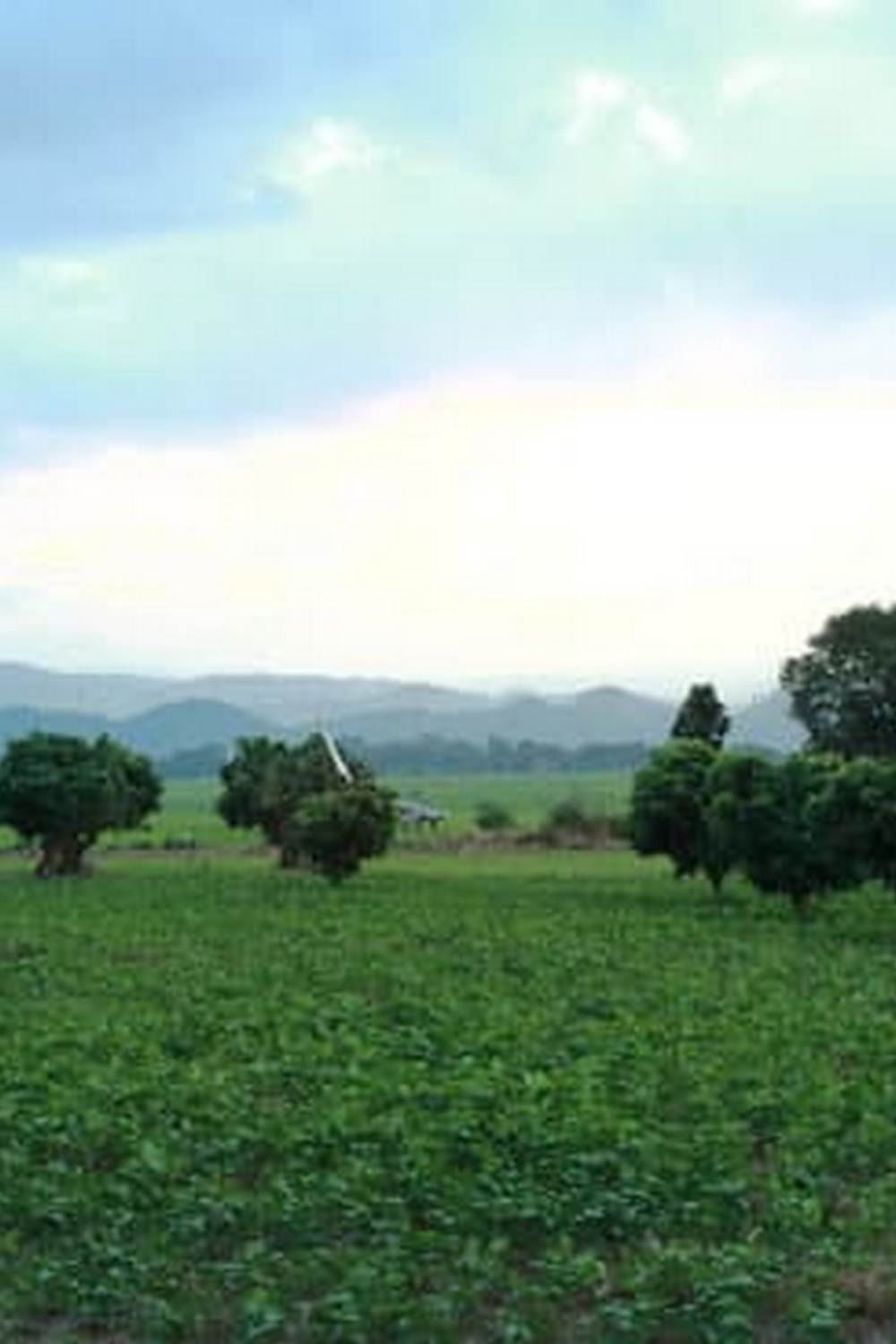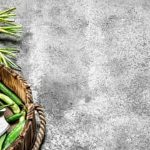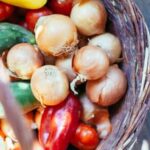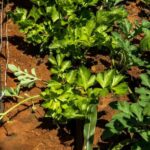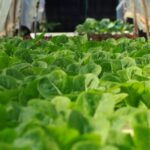Bio Intensive Vegetable Gardening is a sustainable gardening method that focuses on maximizing yields in limited space while also promoting soil health and biodiversity. This method emphasizes the use of organic practices to cultivate a thriving garden ecosystem. By utilizing techniques such as companion planting, crop rotation, and intensive spacing, bio-intensive gardening can help you grow a variety of vegetables efficiently.
One of the key benefits of Bio Intensive Vegetable Gardening is its ability to produce high yields in small spaces, making it ideal for urban gardeners or those with limited land. By prioritizing soil health and using natural fertilizers like compost, this method also promotes long-term sustainability by enriching the soil instead of depleting it. Additionally, bio-intensive gardening reduces the need for synthetic pesticides and fertilizers, resulting in a more eco-friendly approach to cultivation.
In this article, we will delve into the principles of Bio Intensive Vegetable Gardening and explore how you can plan and maintain your own thriving garden using these sustainable practices. From choosing the right vegetables to understanding soil preparation and pest control, we will provide you with all the information you need to get started on your bio-intensive gardening journey.
Let’s dig in and discover how you can transform your green space into a bountiful oasis using these tried-and-true methods.
Principles of Bio Intensive Vegetable Gardening
Bio-intensive vegetable gardening is a method of growing vegetables that focuses on maximizing yields in a small space while promoting soil health and biodiversity. This approach is based on the idea that by closely planting a variety of crops, you can create a self-sustaining ecosystem where plants support each other’s growth.
The principles of bio-intensive gardening include double-digging beds to improve soil structure, planting a diverse range of crops to prevent pests and diseases, and using compost to provide essential nutrients to the soil.
One core concept of bio-intensive vegetable gardening is the idea of carbon farming, which involves increasing the amount of organic matter in the soil to sequester carbon and improve soil fertility. By integrating cover crops like legumes that fix nitrogen into the soil, gardeners can reduce the need for synthetic fertilizers and promote a healthy microbial community underground. This not only benefits plant growth but also helps combat climate change by storing carbon in the soil.
Another important practice in bio-intensive gardening is companion planting, where compatible crops are planted together to maximize yields and deter pests. For example, planting aromatic herbs like basil or marigolds alongside tomatoes can help repel pests naturally, reducing the need for chemical pesticides.
This holistic approach to gardening fosters biodiversity and creates a resilient ecosystem that can thrive without relying on harmful chemicals. By following these principles and practices, gardeners can create productive and sustainable gardens that provide fresh, nutritious produce all season long.
Planning Your Bio Intensive Vegetable Garden
Bio intensive vegetable gardening is a sustainable and eco-friendly method that focuses on maximizing the productivity of small garden spaces while minimizing resources and waste. Before diving into planting your bio intensive vegetable garden, it is important to carefully plan and prepare the groundwork for a successful growing season.
Assess Your Garden Space
The first step in planning your bio intensive vegetable garden is to assess the available space you have for planting. Measure the dimensions of your garden plot or raised beds to determine how much planting area you have. Consider factors such as sunlight exposure, wind patterns, and access to water sources when deciding where to plant your vegetables. Make a rough sketch or layout of your garden space to help visualize where each crop will be planted.
Set Clear Goals and Prioritize Crops
Before selecting which vegetables to grow, set clear goals for your bio intensive vegetable garden. Determine whether you are growing primarily for fresh produce consumption, preserving crops for later use, or selling surplus harvests. Once you have established your goals, prioritize which crops are essential for meeting those objectives. Choose high-yielding vegetables that are well-suited for your climate and growing conditions to make the most of your garden space.
Create a Planting Schedule
Creating a planting schedule is crucial for maximizing yield and extending your growing season in bio intensive vegetable gardening. Divide the available space in your garden into different plots or sections based on crop rotation principles. Plan out when each crop will be planted, taking into account their specific growing requirements, maturation times, and harvest periods. By staggering your plantings throughout the season, you can ensure a continuous supply of fresh produce from your bio intensive vegetable garden.
Choosing the Right Vegetables for Bio Intensive Gardening
Bio Intensive Vegetable Gardening is a method that focuses on growing a diverse range of organic vegetables in a small space while maximizing productivity. When choosing the right vegetables for this type of gardening, it is essential to select crops that are well-suited for intensive planting and can thrive in close proximity to one another. Some vegetables are better suited for bio intensive gardening than others due to their growth habits, nutrient requirements, and compatibility with companion planting.
To make the most of your bio intensive vegetable garden, consider selecting crops that are high-yielding and fast-growing. This will help you achieve maximum productivity in a limited space. Popular choices for bio intensive gardening include leafy greens like lettuce, spinach, and kale, as they can be harvested multiple times throughout the growing season. Other recommended vegetables include root crops like carrots and radishes, which can be grown closely together without competing for space.
Here are some examples of vegetables that are well-suited for bio intensive vegetable gardening:
- Tomatoes
- Cucumbers
- Zucchini
- Peppers
- Beans
These crops are not only productive but also complement each other when planted in close proximity. By carefully selecting the right mix of vegetables for your bio intensive garden, you can create a balanced ecosystem that promotes healthy plant growth and minimizes pest problems.
In addition to selecting high-yielding crops, it is also important to choose varieties that are disease-resistant and well-suited to your climate and growing conditions. Consider exploring heirloom varieties or open-pollinated seeds that have been adapted to specific regions. With the right selection of vegetables tailored to your bio intensive gardening practices, you can enjoy a bountiful harvest year after year.
Soil Preparation and Composting for Bio Intensive Gardening
Understanding Soil Health
Good soil health is crucial for successful bio intensive vegetable gardening. Healthy soil provides essential nutrients to plants, helps retain moisture, and fosters beneficial microbial activity. To achieve optimal soil conditions, it is important to understand the composition of your soil. Conduct a soil test to determine its pH level, nutrient content, and texture. This information will guide you in making necessary amendments to improve your soil for growing vegetables.
Composting for Nutrient-Rich Soil
Composting is a key practice in bio intensive vegetable gardening as it helps enrich the soil with organic matter and nutrients. Start by collecting kitchen scraps, yard waste, and other organic materials to create a compost pile or bin. The decomposition process will produce nutrient-rich compost that can be added to your garden beds. Incorporating compost into the soil improves its structure, fertility, and water retention capacity, creating an ideal environment for plant growth.
Cover Cropping and Green Manure
In addition to composting, cover cropping and green manure are effective ways to enhance soil health in bio intensive vegetable gardening. Cover crops such as clover or legumes help prevent erosion, suppress weeds, fix nitrogen in the soil, and add organic matter when tilled under. Green manure crops like oats or buckwheat can also be grown specifically to be turned into the soil as a natural fertilizer.
These practices not only improve soil structure but also contribute to long-term sustainability in your garden. By prioritizing healthy soil through proper preparation and composting techniques, you can ensure productive harvests year after year in your bio intensive vegetable garden.
Planting and Spacing in Bio Intensive Vegetable Gardening
Bio Intensive Vegetable Gardening focuses on maximizing yield in limited space by efficiently utilizing every inch of the garden. Proper planting and spacing are crucial aspects of this method to ensure plants have enough room to grow and thrive. With careful planning and organization, you can achieve a bountiful harvest from your small garden plot.
To make the most of your space in bio intensive vegetable gardening, consider using companion planting techniques. This involves planting compatible crops together to maximize growth and minimize pests. Some plants complement each other in terms of nutrient uptake and insect deterrence, creating a more harmonious and productive garden. Here are some popular companion plant combinations to try in your bio intensive garden:
- Planting tomatoes with basil helps repel pests like aphids and whiteflies.
- Growing carrots with onions can help deter carrot flies while enhancing soil health.
- Pairing beans with corn creates a beneficial relationship known as the “Three Sisters” technique, where each plant supports the growth of the others.
In addition to companion planting, proper spacing is essential for healthy plant development in bio intensive vegetable gardening. Each plant requires a certain amount of space to access sunlight, water, and nutrients without competing with neighboring plants. When planning your garden layout, be sure to research the specific spacing requirements for each crop you intend to grow. By adhering to these guidelines, you can optimize your garden’s productivity and create a thriving ecosystem for your vegetables to flourish.
Watering and Mulching Techniques for Bio Intensive Gardening
One of the key components of successful bio intensive vegetable gardening is efficient watering and proper mulching techniques. Water is essential for plant growth, but it is important to use it wisely in order to conserve this valuable resource and promote healthy plant development.
Mulching plays a crucial role in retaining moisture in the soil, suppressing weeds, and regulating soil temperature. By implementing effective watering and mulching practices, gardeners can significantly improve the productivity and sustainability of their bio intensive vegetable gardens.
To achieve efficient water usage in bio intensive vegetable gardening, consider using techniques such as drip irrigation or soaker hoses to deliver water directly to the root zone of plants. This targeted approach minimizes water wastage through evaporation or runoff, ensuring that plants receive an adequate amount of moisture without overwatering.
Monitoring soil moisture levels regularly can help you determine when and how much water your vegetables need, preventing both under – and over-watering which can lead to stunted growth or disease issues.
In addition to efficient watering practices, mulching is another vital aspect of bio intensive vegetable gardening that helps conserve soil moisture and reduce weed competition. Organic mulches like straw, grass clippings, or leaves not only retain moisture in the soil but also gradually break down and enrich the soil with nutrients as they decompose.
Mulching also acts as a barrier against weed growth by blocking sunlight from reaching weed seeds, reducing the need for manual weeding. By combining proper watering techniques with strategic mulching practices, gardeners can create a more sustainable and productive bio intensive vegetable garden.
| Key Watering Tips | Key Mulching Techniques |
|---|---|
| Use drip irrigation or soaker hoses for targeted watering. | Utilize organic mulches like straw or grass clippings. |
| Monitor soil moisture levels regularly to prevent under – or overwatering. | Apply mulch around plants to retain soil moisture. |
| Avoid watering during peak sunlight hours to minimize evaporation. | Mulch thickness should be around 2-4 inches for optimal results. |
Maintenance and Pest Control in Bio Intensive Vegetable Gardening
Maintaining a bio intensive vegetable garden requires regular care and attention to ensure the health and vitality of your plants. One key aspect of maintenance is pest control, which can be effectively managed without the use of harmful chemicals. By adopting natural and sustainable practices, you can keep your garden healthy while minimizing environmental impact.
One method of pest control in bio intensive gardening is promoting biodiversity. By planting a variety of different crops, flowers, and herbs, you can attract beneficial insects that will help keep pest populations in check. Ladybugs, lacewings, and predatory wasps are just a few examples of insects that feed on garden pests like aphids and caterpillars. Additionally, incorporating companion plants that deter pests or attract beneficial insects can further support a balanced ecosystem in your garden.
Another important aspect of maintaining a thriving bio intensive vegetable garden is proper sanitation practices. Removing debris, weeds, and diseased plants promptly can help prevent the spread of pests and diseases throughout your garden. Regularly inspecting your plants for signs of pest damage or disease allows you to take action early on before issues become widespread. Implementing crop rotation strategies can also help reduce pest pressure by disrupting their life cycles and preventing buildup in the soil.
| Bio Intensive Gardening Pest Control Methods | Benefits |
|---|---|
| Promoting biodiversity | Natural pest control without harmful chemicals |
| Sanitation practices | Prevention of pest and disease spread |
| Crop rotation | Reduction in pest pressure through disruption of life cycles |
Harvesting and Succession Planting in Bio Intensive Gardening
In conclusion, bio intensive vegetable gardening is a sustainable and efficient method of growing crops that not only benefits the environment but also maximizes yield in limited spaces. By following the core principles and practices of bio intensive gardening, such as deep soil preparation, companion planting, and composting, gardeners can create healthy and productive gardens. Choosing the right vegetables for this method is essential to ensure success, considering factors like crop rotation and plant compatibility.
Once your bio intensive vegetable garden is established, proper maintenance and pest control methods are crucial to keep it thriving without resorting to harmful chemicals. Watering techniques, mulching strategies, and spacing considerations all play a role in achieving optimal growth and minimizing weed competition. Additionally, succession planting can help extend your harvest throughout the growing season by planning for continuous crop rotations and replanting.
Overall, bio intensive vegetable gardening is a holistic approach that promotes self-sufficiency and environmental stewardship. By incorporating these practices into your gardening routine, you can enjoy bountiful harvests while reducing your ecological footprint. Whether you are a novice gardener or an experienced one looking to adopt more sustainable methods, bio intensive vegetable gardening offers a rewarding way to connect with nature and produce nutrient-rich foods for yourself and your community.
Frequently Asked Questions
What Are the Criticism of Grow Biointensive?
Grow Biointensive has faced criticism for being labor-intensive and requiring significant time and effort to maintain. Some also argue that the yields from this method may not always match the expectations set by its advocates, leading to disappointment among some users.
How Do You Make a Bio Intensive Garden?
To create a Bio Intensive garden, one must first focus on soil health through double-digging and incorporating compost. Planting crops closely together in raised beds helps maximize space and promote plant interactions. Regular watering, mulching, and composting are crucial for success in this method.
What Is the Bio Intensive Method?
The Bio Intensive method is a sustainable agriculture approach that aims to maximize food production while minimizing resource use. It utilizes deep soil cultivation, companion planting, composting, and crop rotation to create a self-sustaining ecosystem within the garden. This method prioritizes soil fertility and biodiversity for long-term success.

If you’re looking to get into vegetable gardening, or are just looking for some tips on how to make your current garden better, then you’ve come to the right place! My name is Ethel and I have been gardening for years. In this blog, I’m going to share with you some of my best tips on how to create a successful vegetable garden.

